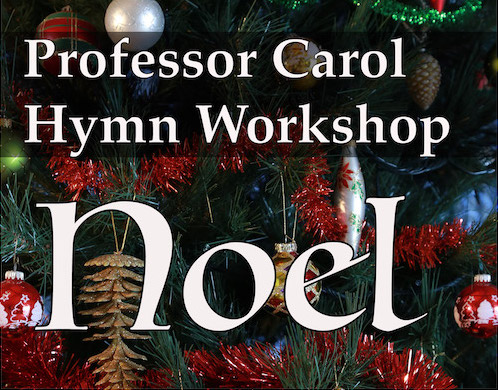Let’s start with a bit of music, a Noël written by an early 18th-century French composer Louis-Claude Daquin.
Is this what you were expecting to hear? Likely not! The word noël leads most of us to expect voices singing something similar to a familiar 1820s Cornish tune with its vivid text:
The first Nowell, the angels did say,
Was to certain poor shepherds in fields where they lay.
So what is a noël? The term indicates several types of music. First, any song whose text narrates the biblical story of Christmas could be deemed a noël—a name taken from Old French for “Christmas Season” (nael) and derived from the Latin for birth (natalis).
Beyond that, two specific styles of musical expression characterize the musical form we call a noël. First, songs with Christmas-oriented texts that having soaring, trumpet-like melodies and strong rhythms similar to the glorious refrain of The First Nowell:
Nowell, Nowell, Nowell, Nowell!
Born is the King of Israel.
Exuberance does characterize the noëls. In fact, the word noël was used as a kind of “hurrah” cry in medieval times during the Christmas Season, similar to the exclamation Alleluia.
 [Learn more in tonight’s Workshop, 8 pm EST.]
[Learn more in tonight’s Workshop, 8 pm EST.]
The second musical style of noël moves us closer to its liturgical roots: Gregorian chants designated for the Advent season. These chant melodies are tender and dear. Some appealed sufficiently to acquire macaronic texts, that is, words in Latin plus a second language, initially French. Certain of these chant-based noëls have endured until our own times, appearing in reworked forms in today’s hymnals, including Nun komm der heiden Heiland (Come Thou Savior of the Nations), based on Veni redemptor gentium and sufficiently beloved by Martin Luther to make his own German translation in 1524.
The 18th-century philosopher and composer Jean Jacques Rousseau may have been first to write a definition of noël in his surprisingly modern music dictionary published in 1768. He described a noël as music with a rustic or pastoral character that reflects the nature and musical tastes of the shepherds who sang the first noëls at the announcement of Christ’s birth.
Indeed, this description of a noel does reflect music of historic shepherds who had to rely upon simple instruments, starting with a hand-carved pipe. Tuning such a pipe depends on acoustics (mathematical factors) that respond to its materials and dimensions. A real shepherd’s pipe, whether in ancient times or modern, produces only specific pitches and a limited volume. Hence, music in a “pastoral” style features simple melodies, usually stepwise with a limited compass of pitches, and very often undulating rhythms consisting of 3, 6, 9, or 12 inner beats. Why would a triple-based rhythm be especially appropriate? Well, rocking back and forth (an action that actually happens in 3’s, not 2’s—try it yourself) would comfort a frightened lamb and keep a drowsy shepherd awake through the long night.
So how do we get from fanfares, chant, or shepherd’s pipes to a noël written for a grand Baroque organ? Here we look to the fact that instrumentalists have always borrowed attractive, popular tunes and turned them into what we call “variations.” A “set of variations” begins usually with the player presenting (reminding us) the tune in a direct fashion. Then variations in the melody occur, sometimes rendering it more decorative or complex, sometimes stretching it to be more solemn, sometimes underlaying it with new harmonies, and sometimes burying it within other melody lines to create a kind of musical puzzle.
Using recognized noël tunes as the basis of variation sets for organ appealed to musicians from late Renaissance times forward, but particularly in the 18th century. French composers like Daquin above, or Jean-Jacques Charpentier (1734-1794) wrote many sets. Many a set was surely “composed” (but never notated) through improvisation—the great tool that every good church organist uses each time he plays a service. Most wonderfully, the variation format allows an organist to show off not just personal virtuosity but the possibilities of the organ’s sound colors. Not surprisingly, favored sets of pipes for noël variations would be those that recreated the rustic mood of shepherd pipes or established soporific sonorities.
So this year, consider broadening your repertoire of noëls. Find a recording of Danquin’s or Charpentier’s organ noels, or Michel-Richard de Laland’s marvelous Symphonie de Noëls (here’s a lovely work that that can wash away the dullness of being bombarded by “top Christmas hits”). Look for arrangements of In dulce jubilo, Veni redemptor gentium, and Il est ne, il divine Enfant. These noëls will bring a lightness to your heart and a lilt to your feet—two things we sorely need this year during Advent.



